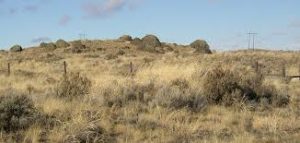Glaciers are bodies of ice that keeps moving under its own weight. Even a slow moving glacier has great cutting powers that they can shape the land they flow over. Glaciers do not pass through the land quietly. They carve out rocks, form steep ridges, bowl like hollows, a lake and many other geological signs. Kames and kettles are examples of such signs.

Irregular hills seen in the areas where glaciers flow are known as kames. They are found either at or near the terminus of glacier. They get formed where glacial melt water pours along the edge of an ice sheet. This action dumps mounds of debris that form as hills. The debris consists of sands and gravel. The kames collapse when ice melts back leaving the mound unsupported. Kames are often quarried for sand and gravel. Thus kames are irregularly shaped hills or mounds of sand, gravel and till.
Kames are steep sided and are associated with kettle lakes. Kettles are blocks of ice separated from the main glacier by blocks of ice melting and falling forward. When the ice blocks melt they leave behind holes or depressions that fill with water. As the ice melts, overlying gravel sinks to bottom leaving behind a gravel-bottomed hollow. When the ice melts, the covering debris cave in, forming the distinctive basins. They are actually rounded basins often occupied by ponds. Most kettle holes are less than 2,000 meters in diameter with depth less than 10 meters.
Kames are seen in Edmonton, Southern Ontario, and Wisconsin. Kames and kettles are often seen together and this topography is known as kame and kettle topography. Kame field, or kame complex is a group of closely associated kames. It may be intermingled with kettles or kettle lakes. Kames are the ridges formed between kettle lakes.
What is meant by thrombus?
Why is it difficult to balance a bicycle when not moving?

